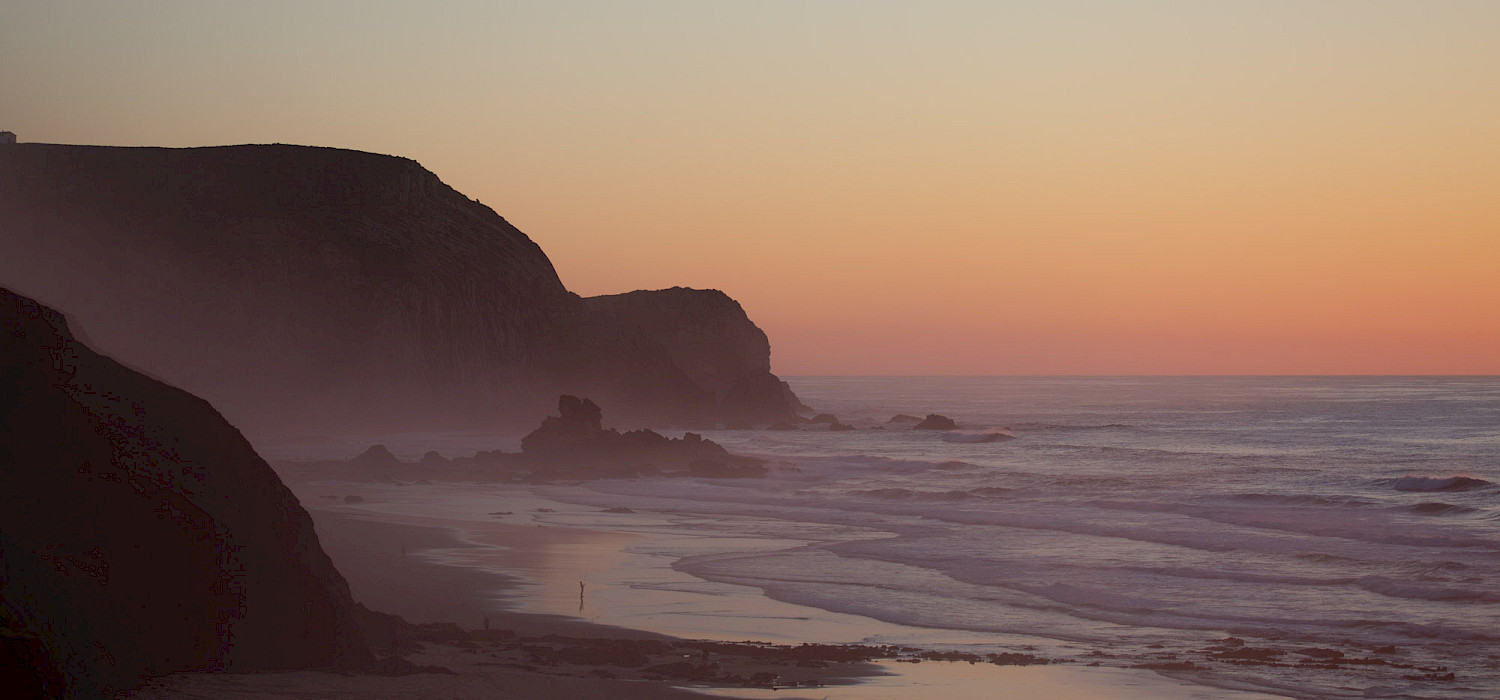5 Secrets You Should Know If You Come to Surf in the Algarve

The Algarve is more than just Europe’s sunniest region; it’s a surfer’s paradise with consistent swells, warm weather, and stunning landscapes. But depending on what you're looking for, your trip can vary a lot. To help you plan smarter and surf better, here are 5 lesser-known secrets about surfing in the Algarve.
1. South Coast or West Coast?
The Algarve offers several surf zones, and they can be over an hour apart. So location matters.
- In winter, the west coast can be huge and unsurfable due to powerful swells. It’s better to stay near the south coast, anywhere from Lagos to Sagres works well.
- In summer, the south coast is usually flat, so your best bet is the west coast (Sagres to Aljezur). It’s also less crowded during summer compared to the beaches in the south.
- In spring and autumn, it depends on your level. If you’re a beginner, the south coast (Lagos to Sagres) might be suitable. Otherwise, Arrifana Beach on the west coast is usually beginner-friendly. For green wave surfers looking to avoid the crowds without driving too much, Vila do Bispo or Carrapateira is a great area.
2. Check the Waves from Bed.
Good news: there are several surf webcams around the region, including Porto de Mós (south coast), Praia do Amado, Arrifana, and Monte Clérigo (west coast). These cams give you a live view of conditions and help you guess how nearby beaches with similar exposure might look, saving you time and helping you hit the right spot straight away.
3. Tides Matter more than you think.
The Algarve is full of beach breaks, which makes it extremely tide-sensitive. The shape and quality of the waves can change a lot depending on the tide, and since sandbanks shift constantly due to swell, wind, and currents, a spot that worked perfectly last month might be completely different now. That’s why it’s always a good idea to ask around or at surf shops which beaches are working best at specific tides during the time you’re visiting. Even a small change, sometimes just 30 minutes, can turn a perfect waves into a fast closeout or a mushy mess. Timing your session with the right tide can make all the difference between frustration and stoke.
4. Winds can be Annoying in Summer.
North winds are a defining feature of summer in the Algarve; they blow almost daily and can really shape your surfing experience. For beginners, this isn’t usually a problem. Many of the more sheltered beaches still offer small, manageable waves, and surf schools know exactly where to go to avoid the wind. However, for intermediate and advanced surfers looking for clean, glassy conditions and longer rides, these persistent winds can be frustrating. Onshore winds tend to chop up the surface of the water, making the waves less predictable and more difficult to ride. Combine that with the summer crowds, especially in popular spots like Arrifana or Amado, and it can feel like you’re spending more time dodging boards than catching waves. That’s why spring and autumn are often considered the golden seasons for experienced surfers; less wind, fewer people, and a much higher chance of scoring those clean green waves we all dream about.
5. Timing is everything.
Most surf schools in the Algarve run their lessons between 9 a.m. and 6 p.m., especially during the high season from late spring through early autumn. That means beaches can get pretty crowded during those hours, with dozens of beginner surfers in the lineup, instructors shouting directions, and a general buzz of activity both in and out of the water. If you’re hoping for a more peaceful session and a better chance to catch waves without competition, timing is everything. Heading out early in the morning or later in the evening can completely change your experience. Not only will you find fewer people in the water, but the wind conditions tend to be much better; mornings are often glassy and calm, and evenings can bring cleaner lines as the wind dies down. Plus, there’s something special about paddling out at sunrise or sunset, those golden hours often come with magical light, a quieter ocean, and a more intimate connection with the sea. So set that alarm early, or hang back until the crowd thins. It’s totally worth it.
---
We hope these tips help you have a smoother, more enjoyable surf trip. And remember: The best wave is the one you can ride!
Cheers,
The Tiny Whale Team
Published: 03 Feb by neil
Tagged: Surfing, surfalgarve, surfforecast, surftips, alrgarve, surfholidays, surfretreatportugal, surfcampportugal, portugalsurf
OTHER SIMILAR ARTICLES
Learn How to Catch and Surf a Green Wave
For surfers, learning to catch a green wave can be a hard transition to overcome. The reality is there are many factors that go into the learning process.READ MORE
The 5 Best Surf Spots in the Algarve
The Algarve offers many surf spot options, and you have to be aware of the surf forecast to hit the right spot. Here there the 5 best surf spots in the area, including the south and the west coast.READ MORE
The 5 Best Surf Camps in Portugal
Are you planning a surf trip in Portugal? check out what we think are the best five surf camps in Europe.READ MORE



